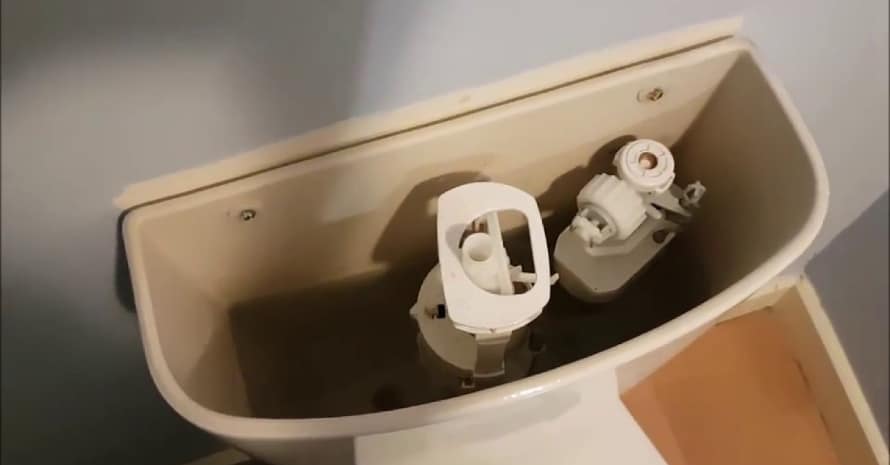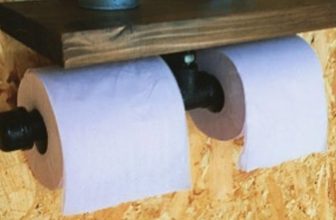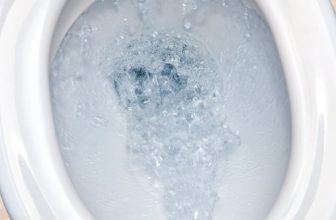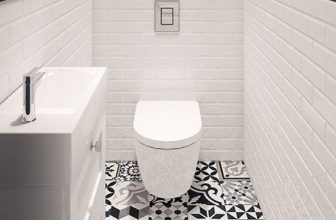A normal toilet tank should fill with water in less than a minute after flushing (especially if it’s a WaterSense one, using 1.28 GPF or less). Sometimes, though, it doesn’t fill, disabling flush. What to do about your toilet tank not filling?
Here are some possible solutions you can apply with your own hands, with no need to call a plumber or replace the entire toilet. Most issues are quite easy to solve with a little work and proper maintenance.
So, the flushing has gradually or suddenly weakened. The water streams slower, and the volume is way lower than EPA or even WaterSense suggests. What can it mean?
Probably it means your toilet tank is filling slowly, and there is simply not enough water as you flush. Let’s see the possible reasons and solutions.
What causes the problem
The first thing to check is usually the water supply in the entire household. Foolish as it seems, sometimes the water does not arrive when the pipe is damaged. Well, the best thing you could do if it happened is turn off the taps to avoid overflowing when the water is back on.
If it’s not the case, the reasons are inside the toilet itself. The most frequent reasons are the following:
Flush Valve Problems
It can be the reason why the water leaks out. This is worse than the supply valve issue, as it’s draining your wallet as well as the water itself. Luckily, it’s the easiest to notice if you pay attention. As you see that the toilet won’t refill, check if the water leaks down. The good news is that if it does, it can be noticed in the bowl without any need to disassemble the flush mechanism.
Fill Valve Problems
There are several possible problems that can happen to fill valves.
- With years, the valve wears out and starts.
- The microparticles in the water accumulate, and the debris blocks the water.
- The fill valve may just break.
Float ball or cup set incorrectly
If you are using a float ball (ballcock) or a float cup mechanism, its height set incorrectly may be the reason why the tank does not fill at all or fills only partially. Even if you practice partial flush, you should not put up with this: who knows when you will need a full one?
Any of these reasons can explain your toilet bowl not filling with water after flush. So, what should you do in these situations?
Possible solutions
There are certain solutions you can apply by yourself if you don’t want to contact pros. They require some general skill and confidence, especially if you have never done this sort of work. Still, there is nothing impossible. Just don’t forget to shut the water supply in the toilet before invading.
All the methods below also imply that you will have to remove the lid of the tank. If you don’t know how to do this with your model, read the manual. Many toilets let you do it just mechanically, but some may have trickier ways of doing it.
We will assume you know how to open the tank. Otherwise, you will have to pay the professional – but the unopenable toilet is a luxury to have.
Float Ball Problems
A float ball (found in old models) or a float cup (in modern ones) can be the reason. The wrong height of the float element can cause slow filling,
- Open the tank and flush the water away.
- Search for the dial or the screw that regulates the position of the float element.
- If you have a cylinder float, you can just squeeze it and move it to the right position.
- Turn on the water supply again.
- Keep the lid off and watch the tank fill.
- If it fills fully and quickly, closes it with the lid.
The exact details may (and will) vary, depending on your mechanism model. Anyway, it’s worth experimenting, even if it results in having to buy a new valve (but it doesn’t mean you have to like it). Experience is worth it.
Fill Valve Problems
If the problem is about your fill valve itself, the simplest way is to replace it. An old one can be too filthy or worn out to work properly. In this case, replacing toilet fill valve is the only way. And this is how it’s done.
To replace the toilet fill valve, you need to have a new compatible valve. For this, check the model of your toilet and contact the store where you bought it or rather the official vendor store.
If these valves are not sold officially anymore, try your luck on eBay or garage sales (though we never run into this unless you’re searching for an obsolete one on purpose).
It does not always make sense to search for compatible details. If your flush system is too obsolete, it’s more reasonable to replace it completely. This is especially necessary if your old flush has metal details that can get rusty.
Rust is hard to remove, and, once exposed to water, the metal will never stop rusting, so all you can do without replacing it is half-measures.
The same applies if the mechanism seems to be broken. It does not often happen because usually, it undergoes truly little disturbance. Still, water flowing can influence it in unexpected ways, so that it can break. If so, simply replace it again.
To replace the valve, do the following:
- Turn off the shutoff valve.
- Flush the water out, then with a sponge or a cloth, dry the bottom of the tank.
- With a screwdriver and an adjustable wrench, unscrew the tank from the seat.
- Place the tank upside down on a soft surface.
- Remove the old valve after unscrewing it from the bottom of the tank.
- Insert the tailpiece of the new flush valve after putting the tank on its side.
- Hold the tailpiece with one hand while screwing the spud nut back on it with another. Tighten the nut with slip-joint pliers or a spud wrench.
- Cover the tailpiece with a soft spud washer.
- Install the tank back on the seat and reconnect the refill tube.
- Check how the new valve works.
In fact, we would recommend changing the spud nut and the washer too if they are old enough. This will prolongate the lifetime of the new valve.
The situation with a slow-filling toilet tank may be different if the reason is the water contains too many mineral particles in it. Dirt particles from it may clog the fill valve, so it may just need cleaning. To clean the valve, you need to:
- Turn off the shutoff valve outside the tank. Flushing is not required.
- Push the cap of the valve down and turn it counterclockwise with one hand while holding the body with the other until the cap pops off.
- (Optionally) After you get access to the inside, clean it with a cloth.
- Turn on the shutoff valve and let it flush for about 30 seconds.
- Return the cap in place, pressing it down and turning clockwise.
- Adjust the float cup level if necessary (as recommended above).
- Close the lid of the tank.
After this procedure, the performance of your toilet can noticeably improve. We must stress, though, that this instruction may only apply to certain valve models. Others may require a different approach when in need of cleaning. Check the manual if necessary.
Whatever you choose – resetting the float, replacing the valve, or cleaning it – the effect of toilet tank filling slowly won’t happen soon. We’d recommend that after the procedures, you wait until the tank fills with water, flush, and check the time again. If the tank fills faster, the job is done; otherwise, there is something else.
FAQ
Summing it up in the most frequently asked questions, we remind you that the exact answer always depends on the model of your toilet and the manner of using it.
What do you do when your toilet tank has no water?
Learn what’s the problem by reading possible causes and checking with your situation. Until you fix it, half-measures (like bringing water from elsewhere to fill the tank manually) are better than nothing. But it’s not a situation to tolerate for long.
Why does my toilet bowl empty itself?
The most common reason is that the flush valve is leaking. Checking the fill valve is a good idea, but you better check the flush valve as well. It can both improve your toilet experience and reduce your water bills.
How to fix a toilet that won’t fill up?
The problem is probably about the valve. But there are different sorts of problems, and to fix the right one, you need to detect them soon.
How to fix a slow-filling toilet tank?
First, detect the reason. The problem may be in fill valves, float cups, or in leakages sending your water down the drain and your water bills to the moon. Then find the instructions on what to do and act.
Let It Flow, Let It Flow, Let It Flow!
It depends on your toilet model and flush system. Some of them are more sophisticated than others, so it’s your right to keep from acting recklessly and call a professional to do the job.
But most situations are typical, and with some knowledge and a little toilet troubleshooting fill valve fixing is not a job to avoid at any cost. It even makes sense to use this trouble to learn how to fix it in the future.
Found it useful? Share it on Facebook or Twitter, or other social media. Your friends will be grateful if they are experiencing this problem now or want to prevent it. You can also add a comment with a story from your experience or just ask a question. Always glad to read your comments!
Also read:
- Best Tankless Toilets
- Best Budget Toilets
- How to Fix a Running Toilet Without a Ball Float
- How to Clean Toilet Siphons
- How to Adjust Toilet Float
- How to Fix a Kohler Toilet That Keeps Running





